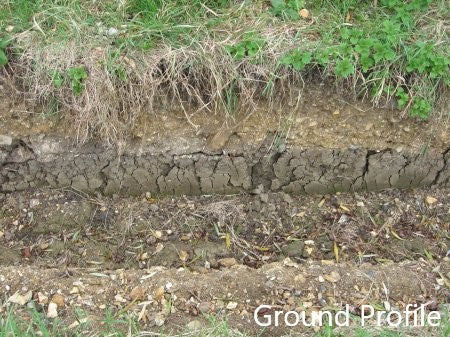At low altitudes the soil is generally weak. Construction of foundation of low-rise buildings on such land will always be a very difficult task as some land improvement is required as per the recommendations of the geotechnical survey report. It is always advisable to carry out a geotechnical survey on these types of properties to examine the soil profile and obtain a recommendation based on soil conditions and settlement criteria.


Figure 01: Weak soil profile
Soil improvement can be done as per the recommendations of the geotechnical investigation report. Typically, for low-rise buildings, a shallow foundation can be constructed to support the structure. However, there are cases where deep foundations such as driven (precast) piles and cast-in-place concrete foundations are constructed when ground improvement is not possible.
For low-rise buildings, it is convenient to build the foundation above the water table because there are single or combined foundations that make drainage very difficult until the foundation and columns are built above the water table. Therefore, soil improvement could occur above the water table.
Most often, excavation is done in a hard layer of soil or in the location recommended in the soil report and filled with sand or quarry dust. There are two methods that can be used when excavating and filling soil. These include excavation work supported by concrete cylinders and excavation work carried out without any support. Figure 02 shows both types.


Figure 02: Excavation methods
Unsupported excavations
This method can be used if the soil is relatively solid and will not collapse during excavation. Furthermore, the excavation depth is limited because there is a risk of soil collapse and the work cannot be carried out if there is danger. Furthermore, the ground may collapse, as shown in Figure 02. Replacing the excavated volume entails additional costs. Therefore, care must be taken when deciding whether or not to proceed with supported excavation.
Assisted excavations
The assisted excavation method is best suited for deep excavation work and when the excavation collapses due to poor soil conditions. This method is more expensive compared to the other method as there is an additional cost for the concrete cylinders.
Depending on the depth, the concrete cylinders are reinforced. Civil engineers must decide whether or not to use reinforced cylinders. At shallower depths, ground pressure is lower and unreinforced cylinders can be used. However, at greater depths, the lateral pressure of the earth is greater. Furthermore, the thickness of concrete is in the range of 50 mm to 75 mm. Therefore, the thickness and arrangement of the reinforcement must be decided according to the civil engineer's recommendation, taking into account the type of soil and the depth of the excavation.
First, a cylinder is placed in the correct location where the excavation will be done. During excavation the cylinder is lowered. Then another cylinder is placed on top of the cylinder in the excavated pit. The same procedure is followed until the excavation to insert the cylinders is completed.
Filling process
After completion of excavation in accordance with the geotechnical investigation report, the excavated pit can be filled. The material can be sand or quarry dust or as recommended by the geotechnical engineer. To fill and compact the pit, you can follow the following procedure or the method recommended in the soil report.
- Remove water from the dug hole
- Fill in a 300 mm layer of sand or quarry dust
- Allow the water table to rise and saturate the fill
- Compact the filling with an internal vibrator. Compaction can also be done with a vibrating plate and can be done before the water table rises or before preventing the water table from rising through drainage.
- After compaction, another 300 mm thick layer is added and compaction is carried out as described above.
- repeat the process

